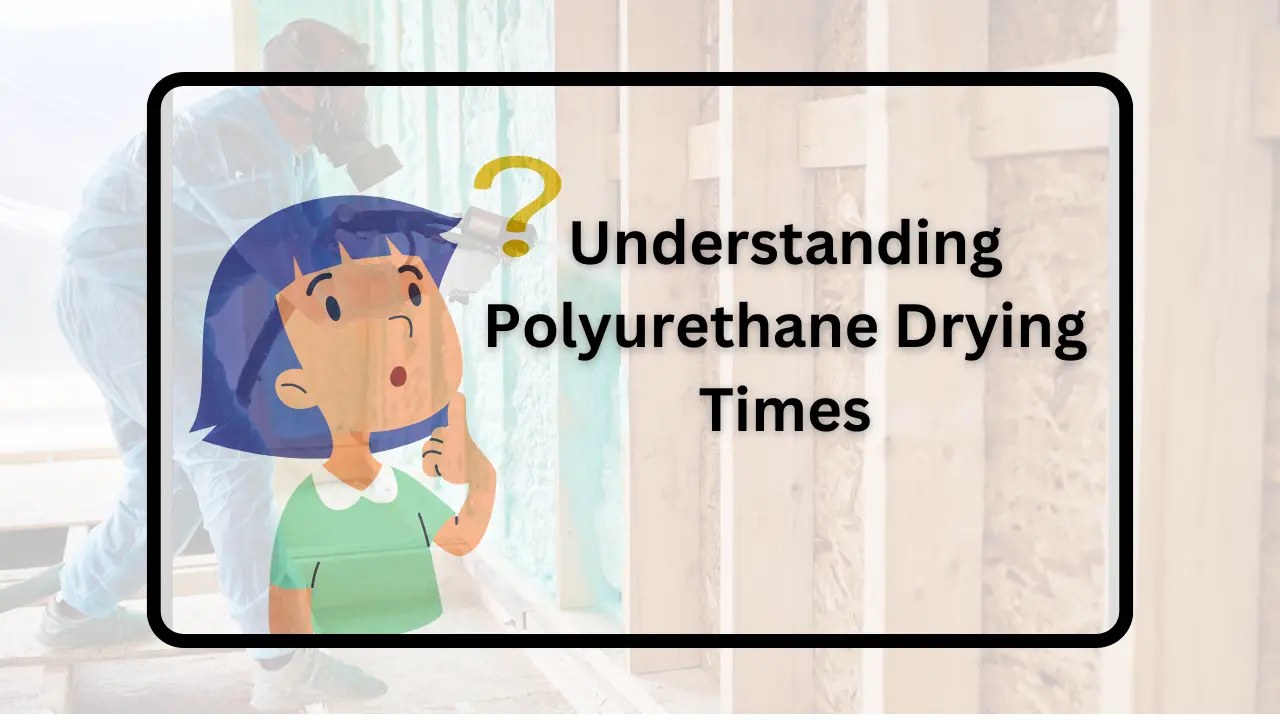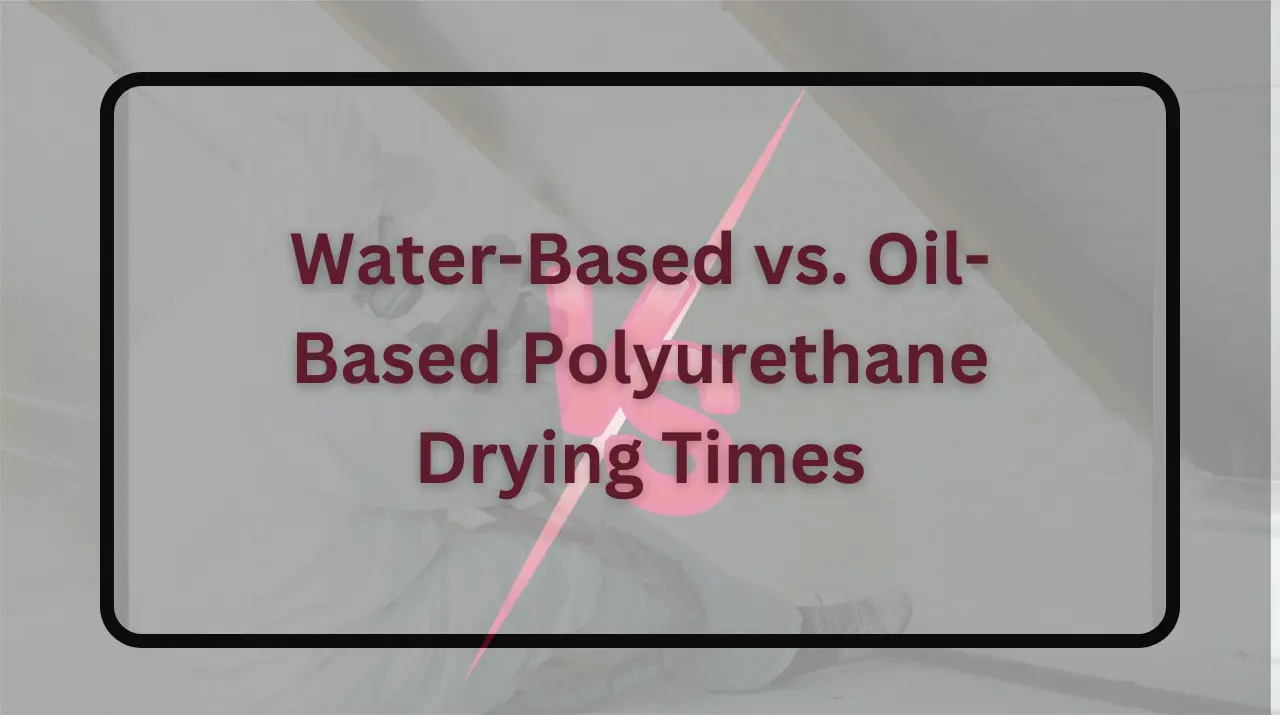How long does polyurethane take to dry? Every DIY enthusiast or pro woodworker has asked about it. You might be refinishing furniture or coating hardwood floors. Knowing the drying time for polyurethane is key for planning. It’s also key to getting the best results.
This is a comprehensive polyurethane drying time guide. We’ll break down the factors that affect drying time. They range from humidity levels to how you apply the paint. You’ll learn tips for speeding up the drying process and avoiding common pitfalls.
By the end of this article, you’ll have the knowledge and confidence. You’ll be able to tackle your polyurethane projects like a pro. You’ll save time and get a flawless finish. So, if you’re ready to master the art of polyurethane application, keep reading!
Understanding Polyurethane Drying Times

It looks at the key part of polyurethane coatings. It sheds light on the factors that affect their drying time. This exploration deals with the complexities of polyurethane chemistry. It covers environmental conditions and application techniques.
It offers insights needed for good results. This guide unravels the details of polyurethane dry time. It gives pros and fans knowledge. They can use it to improve how they coat things.
Related Article: How to Remove Paint from Hardwood Floors
Factors Influencing Drying Times
Understanding the drying times is key. It’s crucial for good results when applying polyurethane coatings. Several factors affect how quickly polyurethane dries. Knowing these variables can help ensure a smooth and fast application.
- Humidity Levels: Air moisture content significantly affects how long polyurethane takes to dry. High humidity slows solvent evaporation in polyurethane. This slowdown makes drying take longer. Conversely, low humidity speeds up drying times as it facilitates faster solvent evaporation.
- Temperature: The ambient temperature also affects polyurethane drying times. Warmer temperatures accelerate the curing process by increasing the rate of solvent evaporation. Colder temperatures slow drying. They require more time for the polyurethane to dry.
- Ventilation: Proper ventilation is essential for expediting polyurethane drying. Adequate airflow helps carry away solvent vapors, allowing the coating to dry faster. Bad ventilation causes long drying times. It may even lead to issues like uneven drying or surface defects.
- Thickness of Application: The thickness of the polyurethane coating applied can impact drying times. Thicker layers take longer to dry compared to thinner coats. You must follow the manufacturer’s guidelines. They cover the recommended thickness. Doing so is vital for fast drying and good coating performance.
- Type of Polyurethane: Different types of polyurethane formulations may have varying drying characteristics. Water-based polyurethanes dry faster than oil-based ones. This is because they have less solvent and faster evaporation. Knowing the specific properties of the polyurethane is key. It helps you predict drying times.
- Preparation of Surface: Properly preparing the surface before applying polyurethane can influence drying times. Clean, dry surfaces with no contaminants allow for better adhesion. They also dry faster. Moisture, dust, or debris on the surface can stop drying. They can harm the finish.
- Catalysts and Accelerators: Some polyurethane formulations may contain catalysts. These are meant to speed up the curing process. These additives can reduce drying times. But they need careful handling for proper application and curing.
These factors affect polyurethane drying times. They can help applicators make informed decisions. This can optimize the process and achieve the desired results quickly. By adjusting the environment, technique, and product based on these factors, you can speed up drying. You can also improve the finish.
Related Article: How Long Does Spray Paint Take to Dry
Water-Based vs. Oil-Based Polyurethane Drying Times

The choice between water-based and oil-based polyurethane matters a lot. It affects drying times and overall results for wood finishes. Understanding the differences is crucial for achieving the desired outcome in woodworking projects. Water-based polyurethane offers quicker drying times and lower odor.
But oil-based options often provide a richer finish and deeper penetration. Each type has its pros and cons. Woodworkers must prioritize when choosing the right polyurethane. In this article, we’ll look at how long water-based and oil-based polyurethane take to dry. This will help you make informed decisions.
Water-Based Polyurethane
One of the primary advantages of water-based polyurethane is its rapid drying time. Typically, water-based polyurethane dries to the touch in 30 minutes to 1 hour. This allows for quicker recoating and finishing than with oil-based polyurethane. But, it’s key to note that while water-based polyurethane dries fast, it may take longer to fully cure. Curing usually finishes in 24 hours. It depends on factors like temperature, humidity, and ventilation.
Oil-Based Polyurethane
Oil-based polyurethane is very durable. But, it takes longer to dry than water-based polyurethane. Oil-based polyurethane’s drying time varies with the environment and the specific formulation. It can take from 8 to 24 hours to dry to the touch. However, full curing may require additional time, often ranging from 24 to 48 hours or more.
Related Article: How Long for Wood Glue to Dry!
Application Tips for polyurethane drying time
Getting a flawless finish with polyurethane takes more than just skillful application. It also involves understanding and managing its drying times. Whether you’re using water-based or oil-based polyurethane, drying time matters. It can greatly impact your woodworking project. In this guide, we’ll cover key application tips.
They tailor well to managing polyurethane drying times. By mastering these techniques, woodworkers can ensure best results. They will also improve the durability and looks of their creations. Let’s dive into the key strategies. They will help you navigate polyurethane drying times well.
Thin Coats
To optimize polyurethane drying time, applying thin coats is key. Here’s how to do it effectively:
Start with the right applicator. Use a foam brush or synthetic bristle brush for small to medium surfaces. Larger areas may benefit from a paint sprayer.
If needed, thin the polyurethane as the manufacturer instructs. This ensures proper flow and penetration. Apply the polyurethane evenly. Use smooth strokes along the wood grain to prevent drips and runs.
Work in parts to keep control and get even coverage. Let each coat dry fully before applying the next. Follow the recommended drying times for the type of polyurethane. By doing this, you’ll master the art of applying thin coats of polyurethane. This will lead to great finishes and quick drying for your projects.
Ideal Conditions
To dry polyurethane fast, ensure ideal conditions. Here’s how:
First, work in a well-ventilated area. This promotes airflow and helps solvents evaporate, which speeds up drying. Maintain a consistent temperature and humidity level within the workspace. Temperatures should be 70-80°F (21-27°C). Humidity should be 40-60%. Avoid extremes in either direction, as they can impede drying. Prepare the wood surface meticulously, ensuring it’s clean, dry, and free of dust or debris.
Properly prepped surfaces facilitate better adhesion and more uniform drying. Apply polyurethane during optimal weather conditions. Avoid very hot or cold places. Also, avoid high humidity or rainy days. These can slow drying and harm the finish.
Follow these guidelines. Create ideal conditions for applying polyurethane. This will speed drying. It will lead to pro-quality results in your woodworking projects.
Proper Ventilation
Proper ventilation is essential when applying polyurethane. It helps manage drying times well. Good airflow helps solvents evaporate. This speeds up drying and smooths the finish. Here’s how to optimize ventilation:
Choose a well-ventilated workspace for your project. It’s best to have windows and doors open to let fresh air flow in. Use fans or air movers to boost airflow and speed drying. Position them strategically to direct air across the surface being coated with polyurethane.
Avoid working in tight or poorly ventilated areas. Stagnant air can slow drying times and harm the finish. If you are indoors, use exhaust fans or air purifiers. They remove fumes and keep you comfortable.
Focus on good ventilation. It will make drying fast and give professional results with your polyurethane.
Sand Between Coats
To speed up polyurethane drying and get a smooth finish, sand between coats. It’s a key step in applying it. Here’s how to incorporate sanding effectively:
Start by letting each coat of polyurethane dry fully. Do this as the maker recommends. Once the first coat has dried, use fine-grit sandpaper (like 220-grit) to lightly sand it. This removes imperfections, like dust or brush marks. It helps paint stick better.
After sanding, wipe the surface with a clean, dry cloth or tack cloth to remove any sanding residue. Repeat this for each extra coat of polyurethane. Be sure to sand lightly between coats to keep a smooth finish.
Be careful not to sand too hard. This can remove too much polyurethane and harm the finish. Sanding between coats gives you a flawless finish. It also speeds drying for your polyurethane.
Related Article: Clean Prefinished Hardwood Floors Guide
FAQs (how long does polyurethane take to dry)
Q: Can I speed up polyurethane drying times?
A: Yes, by following proper application techniques and optimizing environmental conditions, you can expedite the drying process.
Q: What happens if I apply polyurethane in high humidity?
A: High humidity prolongs drying times and may result in a cloudy or tacky finish. Ensure proper ventilation to mitigate these effects.
Q: Is it safe to walk on freshly polyurethane floors?
A: While polyurethane may feel dry to the touch, it’s advisable to wait at least 24 hours before walking on freshly finished floors to prevent marring the surface.
Q: Can I apply polyurethane in cold temperatures?
A: Cold temperatures significantly extend drying times and may compromise the finish’s integrity. It’s best to apply polyurethane in moderate conditions for optimal results.
Q: How long should I wait before placing furniture on polyurethane floors?
A: To avoid imprinting or damaging the finish, wait at least 72 hours before placing heavy furniture on newly polyurethane floors.
Q: Can I apply multiple coats of polyurethane in one day?
A: While it’s possible to apply multiple coats in a single day, ensure each coat has sufficient drying time as per the product’s instructions.
Conclusion
In the realm of woodworking and home renovation, understanding how long polyurethane takes to dry is paramount for achieving professional results. By considering factors such as environmental conditions, application method, and product type, you can ensure timely project completion and a flawless finish. Remember, patience is key when working with polyurethane; rushing the drying process can compromise the integrity of your hard work. Follow the tips outlined in this guide for optimal results and enjoy the beauty and durability that polyurethane brings to your projects.



